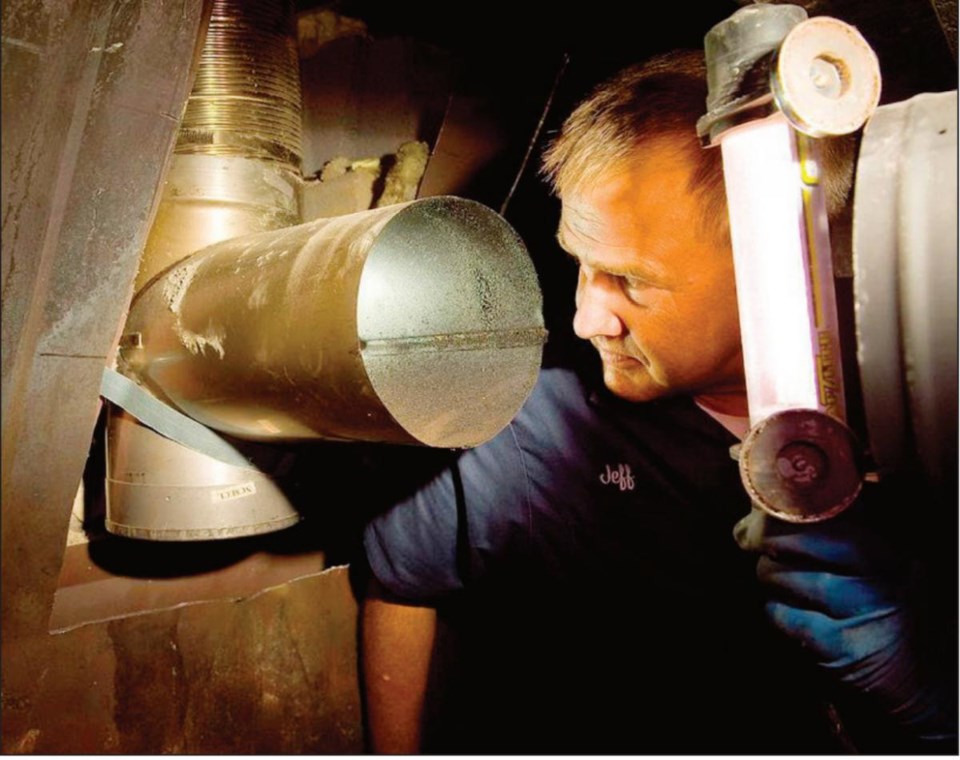People are drawn to a fire, whether they're roasting marshmallows around a campfire during the summer or cuddling up near the fireplace in the dead of winter.
And just as you take precautions outdoors, there are things you should do to make sure your fireplaces and chimneys are safe.
Fires built in fireplaces or wood stoves leave a gummy residue, called creosote, that can stick to the lining of your chimney. Creosote - created by soot, smoke, gases and other particles - is flammable, and can be the source of a dangerous chimney fire.
In the U.S., between 2005 and 2008, an average 26,900 fires annually were blamed on fireplaces, chimneys or chimney connectors, according to the Consumer Product Safety Commission.
We don't have comparable statistics for ÎÚÑ»´«Ã½. In 2002, 5,300 homefires were caused by heating equipment, but that figure includes all types of heating equipment, not just chimney fires.
Experts recommend that chimneys be inspected every year by a certified chimney sweep and cleaned if necessary. The cost can range from $100 to $300 or higher.
Cleaning a chimney is not a doit-yourself project, says Kit Selzer, a senior editor at Better Homes and Gardens. It's a dirty job, and it also can be risky, especially if you have to climb onto the roof.
Chimney sweeps are trained to determine whether chimneys are structurally sound and whether they need to be cleaned, said Ashley Eldridge, education director for the Chimney Safety Institute of America. They also will make sure the chimney is up to code, especially important in older houses.
Selzer recommends that home-
owners use the institute's website, www.csia.org, to select a certified chimney sweep. To become certified, a sweep must pass two tests: one on the inspection process and tools, and the other on the international residential code, as it applies to chimneys, Eldridge said.
ÎÚÑ»´«Ã½ chimney sweeps get credentials through the Wood Energy Technicians of ÎÚÑ»´«Ã½ (wetbc.ca).
Check the website for details.
"Each job is different," said Christina El-Hage, a certified sweep with Pride Clean Chimney Sweeps in Bethesda, Maryland, but there are some basics.
"We're looking to make sure the flue is fully safe," she said. "We're making sure there are no third-degree burns of creosote on the lining."
Chimney sweeps also check to see if there are any birds or animals in the chimney, or anything that would block the flow of smoke. They also check that there's no water coming in.
Cleaning the chimney involves removing creosote.
When thinking of chimneys, El-Hage says, many people focus on the one attached to the fireplace.
"Yes, they can catch on fire, but we're not dealing with a deadly gas, carbon monoxide," she says, as is the case with chimneys leading from furnaces. Whether they burn oil or gas, furnaces vent carbon monoxide outside into the atmosphere, and those chimneys, too, need to be inspected.
"It's the No. 1 reason why we are in business," El-Hage said.
You can choose to use a fireplace, she said, but "you have to use your heat."
There are steps you can take at home to reduce creosote buildup and the risk of a chimney fire.
Foremost is picking dry wood to burn, Eldridge said. To determine whether wood is sufficiently dry, "take two pieces and bang them together. You get almost a ring as an indication its ready. If not, it's a dull thud," he said.
Dry wood also will appear grey on the surface and have cracks on the end.
Don't throw pizza boxes or other trash in the fireplace, El-Hage said, because it causes a thicker smoke, which lowers the temperature in the chimney. "The
hotter the fire, the better the burn," she said.
While many people use a newspaper to start a fire, she recommends a fire log or fire starter instead.
And to reduce the risk of a spark flying out of the fireplace, use a screen and stay in the room while the fire is burning. "The last thing you want to do is build a big old fire and leave the room," Eldridge said.
Also needed: a smoke detector, carbon monoxide detector and fire extinguisher.



